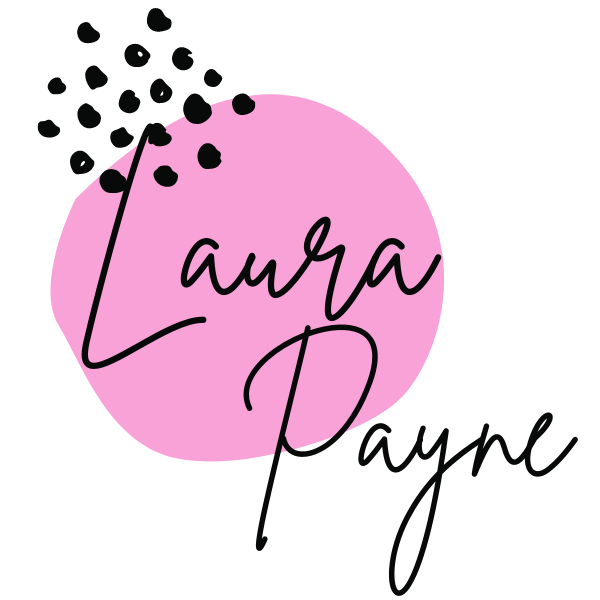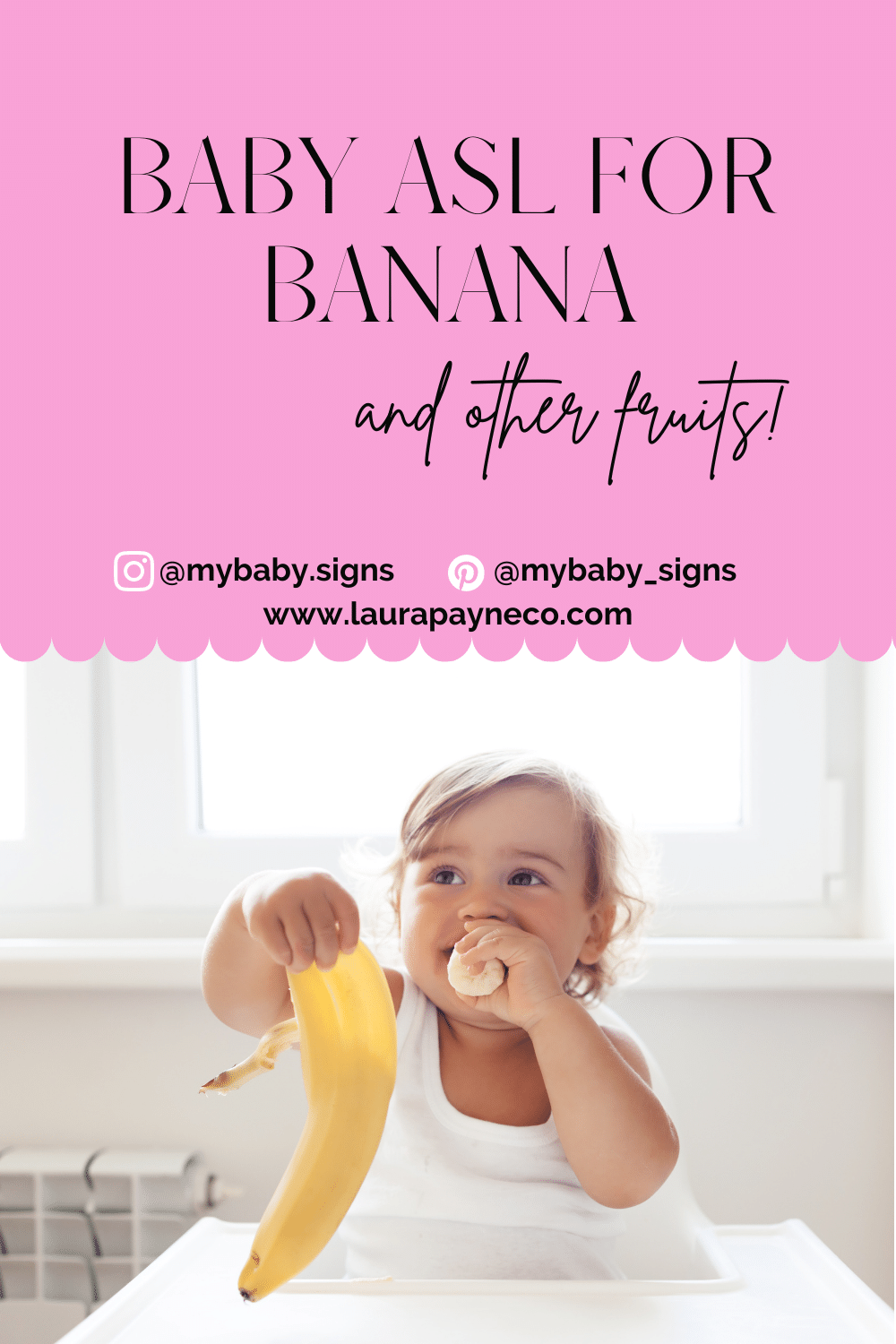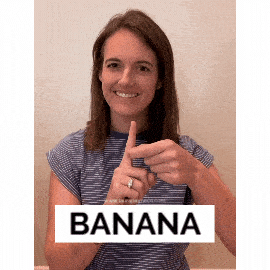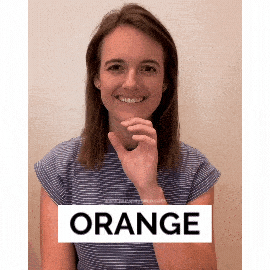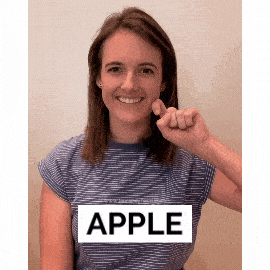Baby ASL for Banana (and other fruits!)
Many parents love to use sign language during meals with their babies and toddlers. Signs that are common to use are MORE, EAT, and ALL DONE. These signs are wonderful to use with your baby to begin that early communication and lessen frustrations that arise during the meal. However, I also recommend extending that vocabulary to include ASL signs for foods, too. (I’ll explain more on that in a moment.) Learning the ASL signs for different fruits is a great place to start!
If you don’t already, please follow me on Instagram for more about how sign language can be a game charger for your baby / toddler’s early communication skills.
Why use baby sign language for foods?
They are high interest. Your little one is hungry at meal time, and that is the motivation for them to communicate. Lean into that motivation and follow what they want to communicate with you about.
They are more precise. The basic signs such as MORE and EAT are wonderful, and a great place to start. However, you quickly realize that you’re not sure what they are referring to. More… banana? cheese? meatball? Using sign language for specific foods can help lessen that guessing game even more!
Can create combinations. Pairing signs for foods with the basics is an instant word combination! Modeling combinations such as MORE BANANA or MORE APPLE can help your young toddler take their language skills to new heights.
Want to use sign language with your little one?
Get Started Now with 10 functional ASL signs to start using with your baby or toddler right away. Learn 3 tips to ensure you are using signs correctly and with realistic expectations. Whether you have already started signing, or just warming up to the idea, this free guide will take you one step closer to your goal!
Look Who’s Signing Now is my signature four part course that teaches you the exact blueprint I use to teach my own children sign language. Beginning with the foundation of why and when to use baby sign language, how to implement it, and what signs to use. With this self-study e-course, you will have the confidence to sign with your baby and boost their early communication while reducing frustrations, tantrums, and time wasted playing the guessing game.
Check out my online resources for parents! Browse my current offerings.
3 ASL signs for fruits
Signing correctly is important. Sign language is the language of deaf individuals. Changing handshapes can either change the meaning of a word completely, or “mispronounce” the word. Many “baby sign language” books and resources have incorrect or made up signs, which is just plain wrong. You can learn more about that in this blog post.
To sign BANANA, use your nondominant hand to “peel” the index finger of your dominant hand. Be sure you’re only peeling with your index finger and thumb, and that the other 3 fingers on your dominant hand are closed (not extended).
ORANGE is signed by starting with the C handshape at the bottom of your chin, and closing it twice into the S handshape (otherwise known as a fist). It’s basically the sign for MILK, but at your chin!
To sign APPLE, bend the index finger of your dominant hand (this is the X handshape) and twist it twice at your cheek.
Using baby sign language during meals
I have a lot of tips in this blog post!

